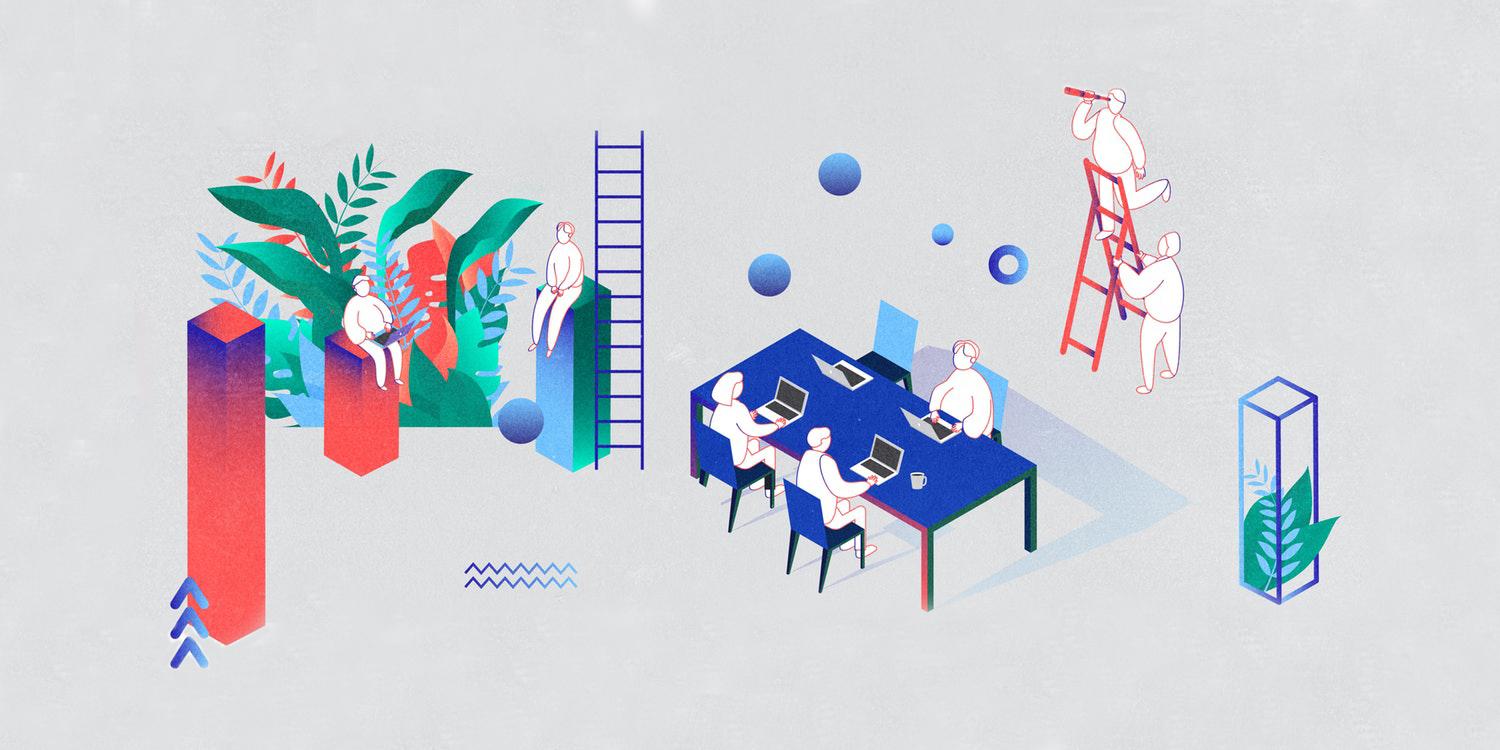How to craft a purpose statement that unifies a family of brands

Business Roundtable, a lobbying group composed of executives from some of America’s largest companies, recently released a statement arguing that today’s corporations must do more than simply drive shareholder value.
CEOs like Tim Cook of Apple, Julie Sweet of Accenture North America, and Larry Fink of BlackRock joined together to declare that businesses must also focus on the ethical treatment of their employees, suppliers, and the environment. In other words, organizations must rethink their purpose—a reason for existing beyond making a profit.
But establishing purpose isn’t simple, particularly for parent companies that own a variety of businesses. Mergers and acquisitions can put the purposes of different enterprises at odds with one another when they find themselves under the same corporate umbrella. Individual employees create their own goals and motivations. But beyond the structural and financial ties across entities and employees within a corporation, there often is no consistent, unifying vision.
With so much complexity in a conglomerate organization, where do leaders begin to create a purpose that functions across many businesses? The solution lies in “nested purpose”—a layered approach that starts at the business level and ladders up to the parent level. Nested purpose builds unity among all employees and businesses, making everyone feel connected. We’ve seen it shift leaders’ mindsets from “running a business owned by a parent company” to “being part of a family of businesses that are stronger together.” Nested purpose has the power to inspire new individual behaviors that in turn catalyze global impact across a corporation.
Walt Disney Company, for example, defines their “why” within their mission statement, “To entertain, inform and inspire people around the globe through the power of unparalleled storytelling.” This statement applies across nine subsidiaries, each with different audience engagement, content, and distribution. A tier down, ESPN, which is owned by Disney, describes their “why” as, “To serve the sports fan, anytime, anywhere.” This statement is more focused on the ESPN consumer and their habits, but it nests comfortably within Disney’s higher purpose, enabling the two to function in tandem toward their ultimate goal, and giving employees in the smaller section of the business a sense that they’re meaningfully connected to the parent corporation.


The following is a series of tools and exercises to help foster nested purpose, based on our experience working with a global corporation hoping to drive transformational change within their organization. Like the Business Roundtable executives, this particular CEO knew that developing purpose at the parent-company level would be both virtuous and strategic, but needed leaders from each of the businesses to be engaged, aligned, and inspired. In addition to engaging these executives, we included promising talent—from mid-level managers to vice presidents—in the work to define and activate parent-level purpose.
Begin by setting the wheels in motion
At the first session with the heads of the businesses and their employees, we introduced the Purpose Wheel: a tool designed to foster conversations about purpose. The Wheel helps teams envision the various ways the parent company might have impact in the world. Simultaneously, the Wheel builds the foundation for an eventual purpose statement. Before crafting the specifics and poetry of a purpose statement, leaders must first find common ground around the idea and how it’s nested throughout the company.

Spinning the Purpose Wheel, the group imagined what the parent company’s future might look like if their purpose was grounded in the following five underlined areas:
We exist to Enable Potential
This suggests a parent company creates impact by inspiring greater possibilities, such as Nike, whose products and services exist to motivate and empower athletes.
We exist to Reduce Friction
By simplifying and eliminating barriers, companies like Spotify make daily pleasures—like listening to music—more accessible and seamless for customers.
We exist to Foster Prosperity
Brands like Warby Parker, which donates a pair of glasses to someone in need for every pair sold, creates impact by supporting the success of others.
We exist to Encourage Exploration
This suggests that a company’s purpose is to champion discovery. Adobe, for example, offers a creative suite of tools and services that people can use to design and explore.
We exist to Kindle Happiness
Zappos purpose is “to live and deliver WOW.” The retail company creates impact by inciting pure joy.
While spinning the wheel, we posed the following questions to encourage discussion: If we exist to [ insert one of the five areas ], how might that purpose ultimately show up in our individual workplaces and in the world? What would all of us—together—have to agree to start or stop doing in order for this parent-company purpose to be true?
The Wheel’s five areas are intentionally designed to be fluid. Phrases like “enable potential” and “encourage exploration” are similar yet different. Though Spotify’s purpose is grounded in reducing friction, the company’s purpose could also be rooted in kindling happiness for its millions of listeners. This kind of flexibility is especially useful when establishing shared purpose among diverse businesses, as it enables generative conversations and more opportunity for alignment.
The Purpose Wheel also opens teams’ eyes to new possibilities: If a parent company exists to foster prosperity, for example, what innovative ideas or growth opportunities might this foundation unlock for one of its business groups? Perhaps it’s tweaking the manufacturing process to be more environmentally-friendly, developing a more human-centered customer service strategy, or instituting a new parental leave benefit for employees.
Get tangible through storytelling
Once this groundwork was laid, we broke the executives and employees into small groups and asked each member to share stories about their business that made them proud or represented their workplace culture at its best—focusing on humans and experiences, not profit or performance.
One business head talked about an entry-level employee who works at one of the energy plants her business operates. During a shift, the worker put his job at risk by persistently questioning a supervisor’s recommendation. His willingness to push authority ended up preventing an accident at the plant, one that would have put both the business and worker safety at risk. A mid-level manager shared a story about his business providing the financial resources to send a customer’s son to engineering school. After graduation, the son returned to his village to help the community learn to irrigate crops and generate food for the local area.
When asked to boil these stories down into values, the groups landed on words like bravery, dedication, trust, protection, empowerment, and generosity. Articulating these values prompted even more storytelling: Other participants began considering and sharing stories from their own organizations. Eventually, they generated a collection of stories about a particular shared value from across the parent company.
Look to the future with optimism
While stories of the past help illuminate purpose-oriented practices already in play, considering the future encourages leaders to articulate hopes and dreams for the parent company. During another workshop, we gave the team blank front covers of magazines, ranging from WIRED to National Geographic. We asked them to reflect on the purpose statement and values they’d derived from the previous exercises to imagine how their company might show up on a magazine cover in the future. What image would appear? What would the headline say?
One participant proudly taped his National Geographic cover on the board. The headline read, “Plastics Now Completely Eliminated From the World’s Oceans.” Another’s cover said, “[Parent company’s CEO] Named Time’s Person of the Year.”
When creating purpose at the parent company level—or any level for that matter—it’s helpful for tools and exercises to toggle between the accessible (sharing real stories) and aspirational (spinning the Purpose Wheel and imagining the future). This ensures that the eventual purpose statement is ambitious and inspirational, but also relatable and within a business’ reach.
Collaborate to drive improvement and alignment
To ground the group back in the tangible, we guided them through a writing session, asking them to draft three potential purpose statements for the parent company, based on the structure established from the Purpose Wheel, the values derived from their favorite stories, and the visions captured on the magazine covers.
Each team presented their favorite to the larger group, then switched tables and left their favorite purpose statement for others to inherit, build on, and improve. At the end of the rotations, every participant had contributed to five strong purpose statement prototypes to continue refining and testing with teams.
Putting purpose into practice
Nested purpose isn’t simple. Done poorly, it can confuse, distract and compound already complicated dynamics at the parent company-level. But when carefully planned and designed with both leaders and their employees, nested purpose can invigorate an organization by clarifying roles and creating cohesion across industries and countries.
Written by Kristin Kelly and Nate Carter
Visuals by Louisa Liu
Words and art


Subscribe

.svg)









